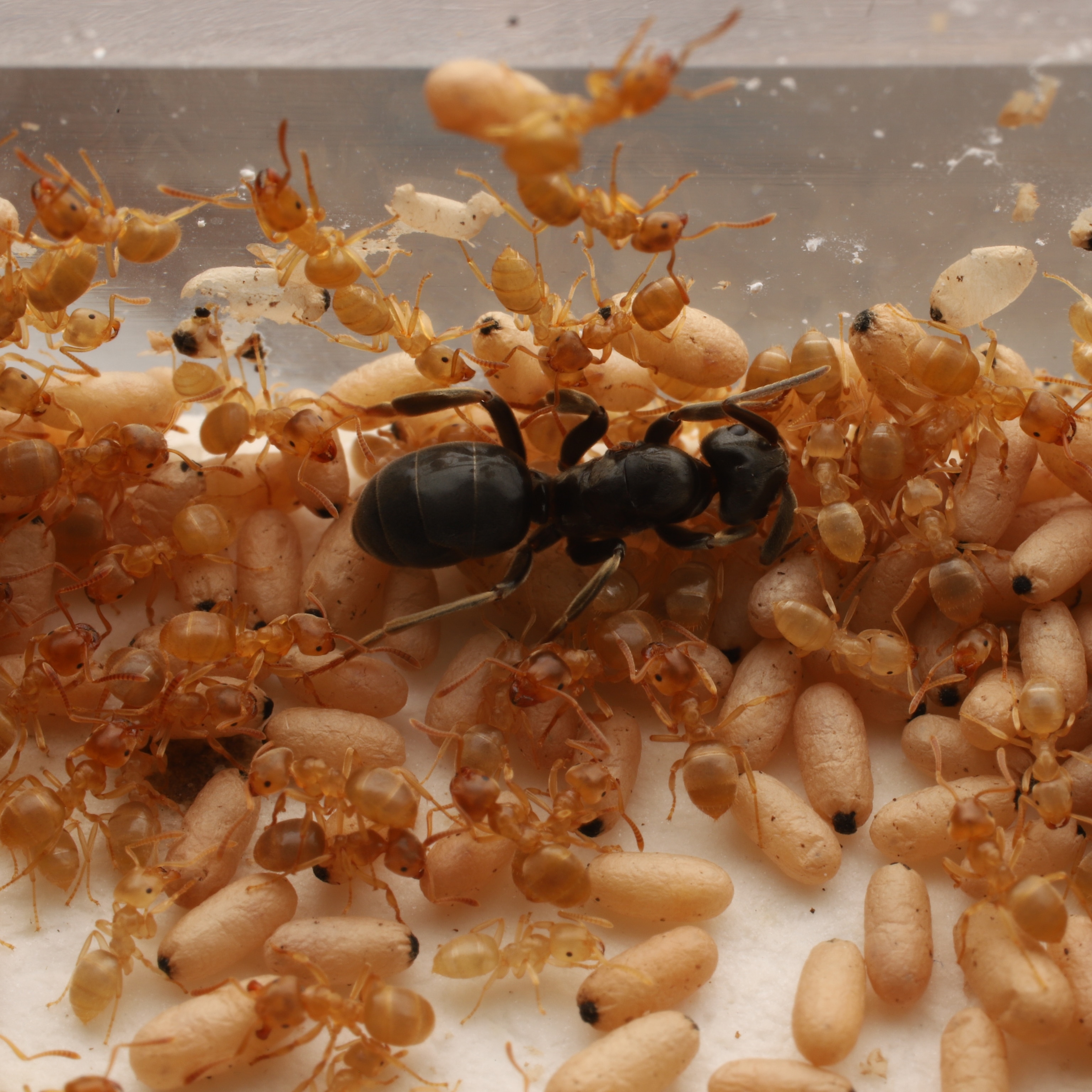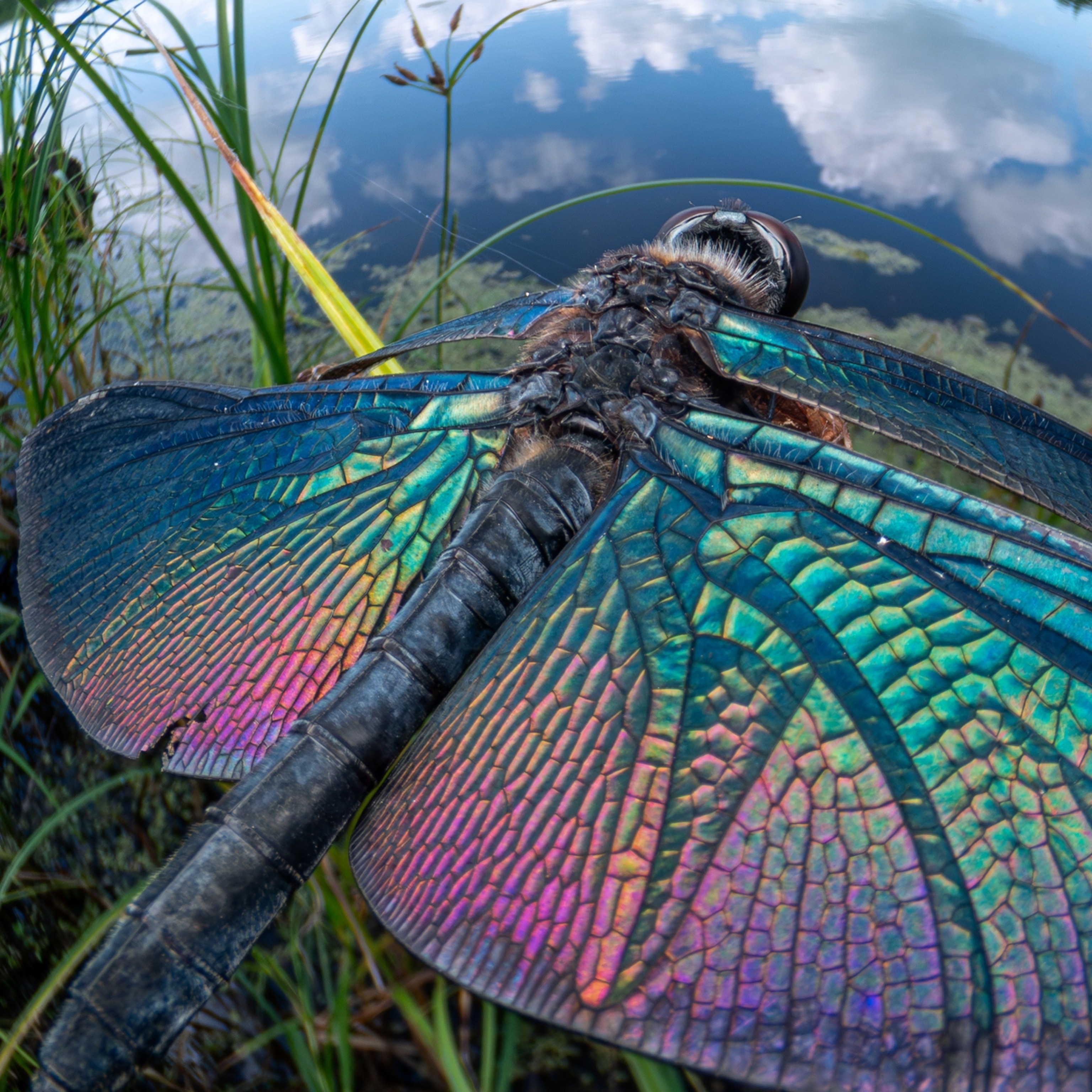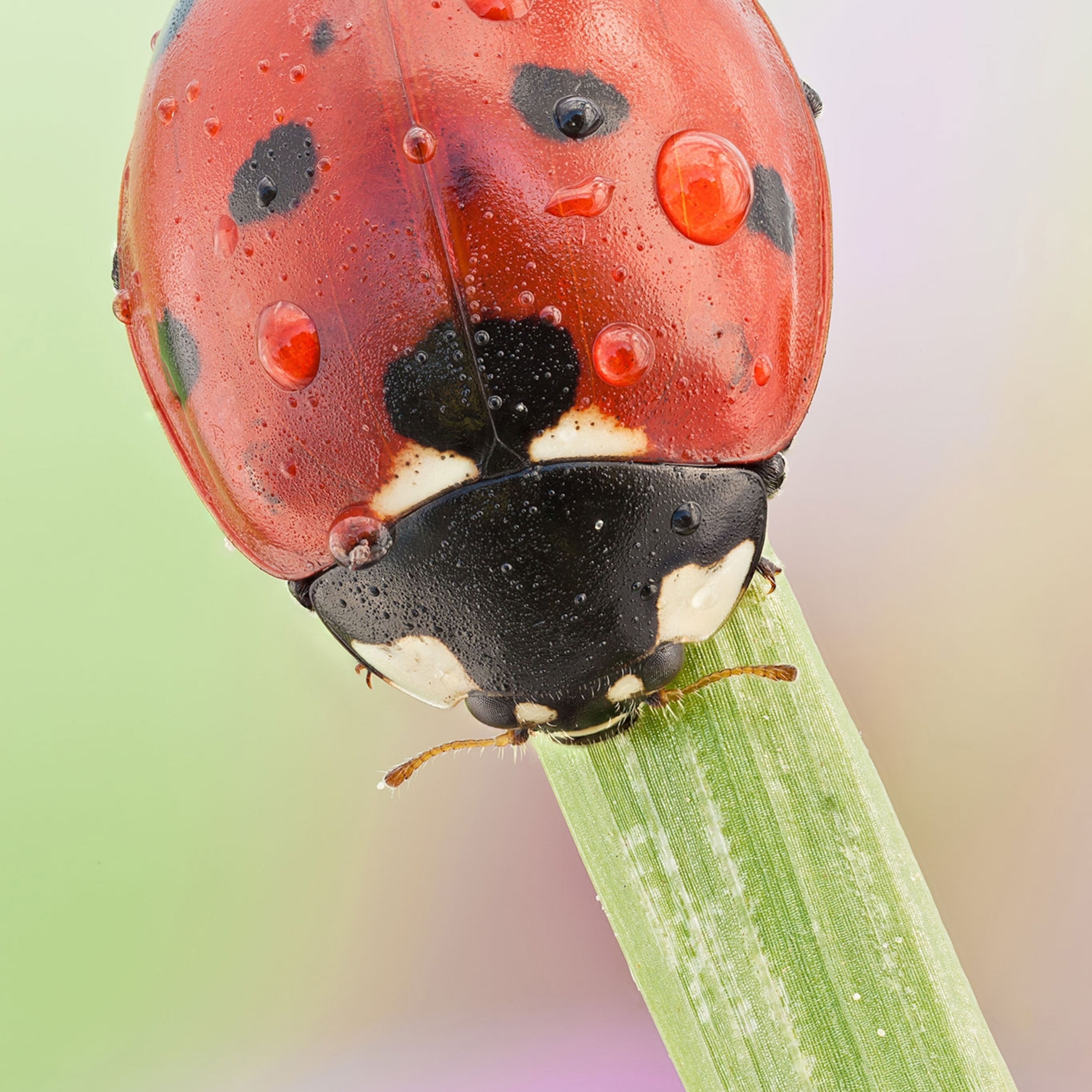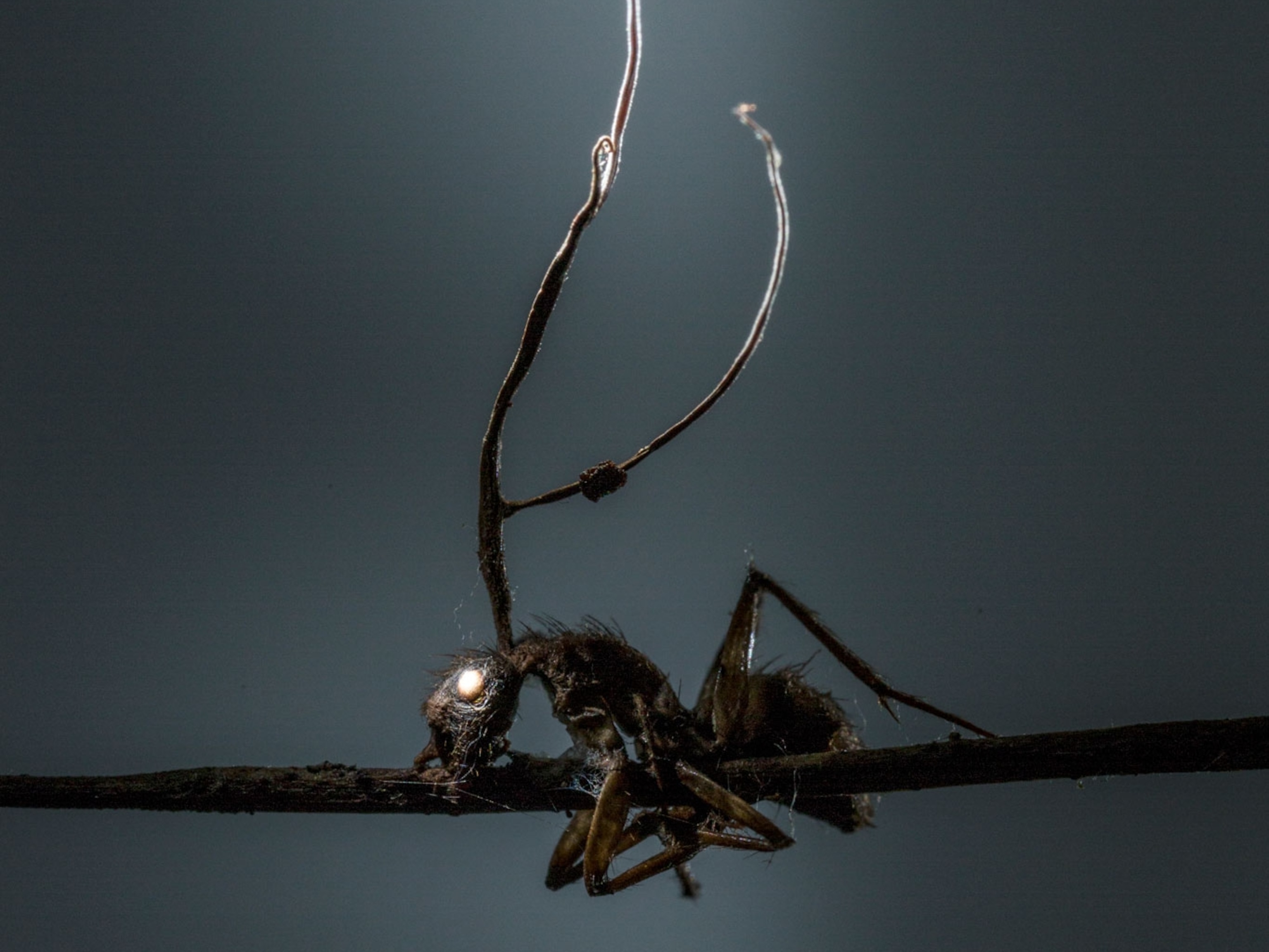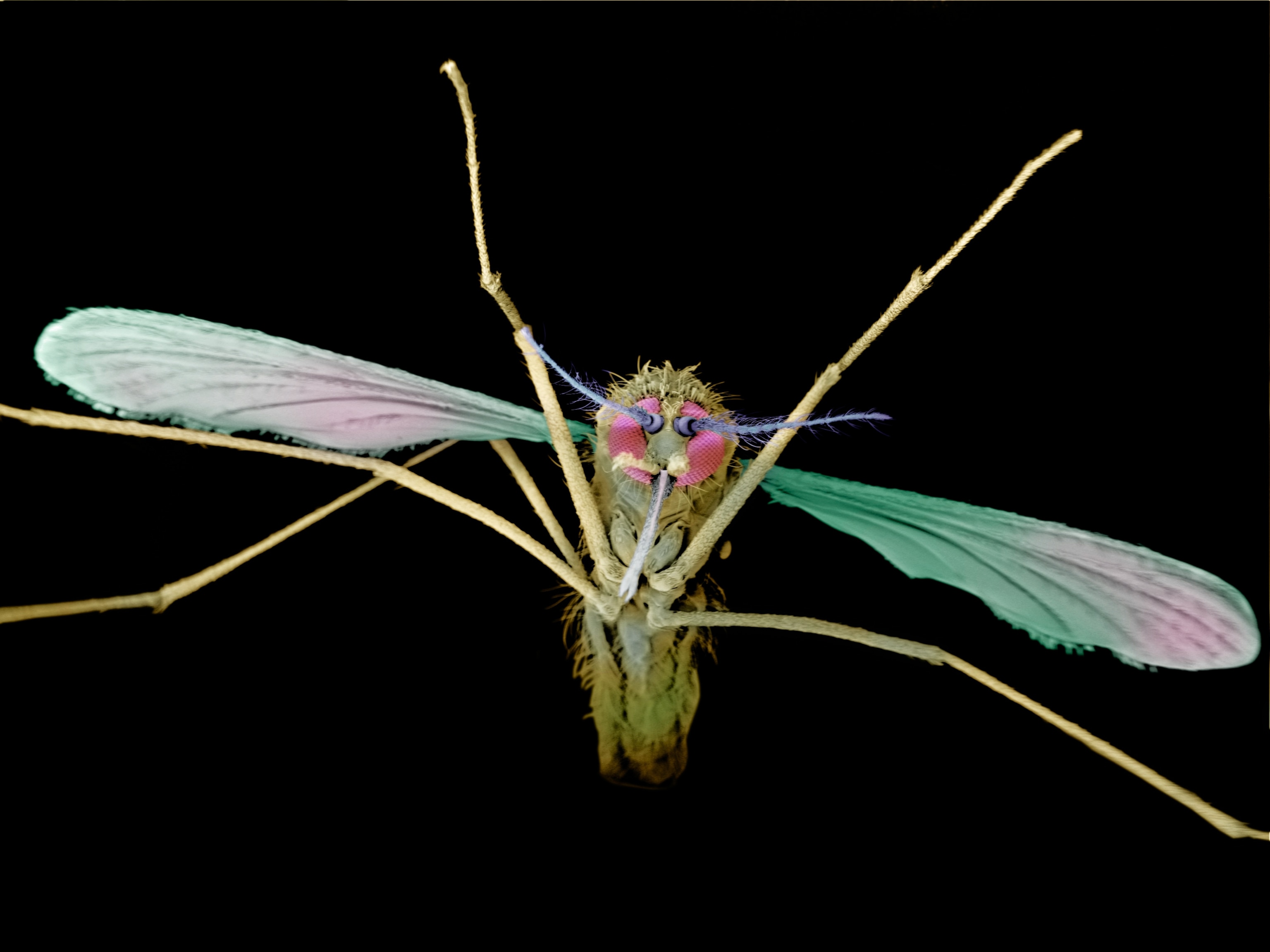Kendrick Nakamura has 43 pets. Two are rabbits, one is a cat, and all the others are freshly caught queen ants he hopes will start their own colonies. In a matter of months, he’ll likely have hundreds more ants to take care of, and he can’t wait.
“They’re like a miniature society,” Nakamura says. “You can see them 'talking' to each other by feeling out with their antennae. In the nest you can watch messages like 'there's food!' or 'here, have some of this sugar water’ as they share with each other. It's fascinating.”
Right now Nakamura’s queen ants are living inside small glass test-tubes in a large plastic crate on his bedroom dresser. Though he’s had hundreds of ant colonies over the past four years, it’s an economical hobby; Nakamura usually spends no more than $10 a month for the ants’ lodging (various containers) and dining (mostly cockroaches).
Nakamura, a full-time student in Riverside County, California, isn’t alone in his antkeeping obsession. In the last decade, tens of thousands of people around the world have taken up the hobby, which has come a long way from the toy ant farms of the 1950s. Cutting-edge ant homes, called formicariums, make it easier to grow large colonies and watch ants as they lay eggs and tend to their broods. Active online communities share information and debate fine points from the best ant diets to the secrets for lulling colonies into hibernation. Some hobbyists are meticulously documenting rare ants' life cycles and making fascinating observations of understudied species. Now, scientists are starting to pay attention too, and taking advantage of hobbyists’ expertise.
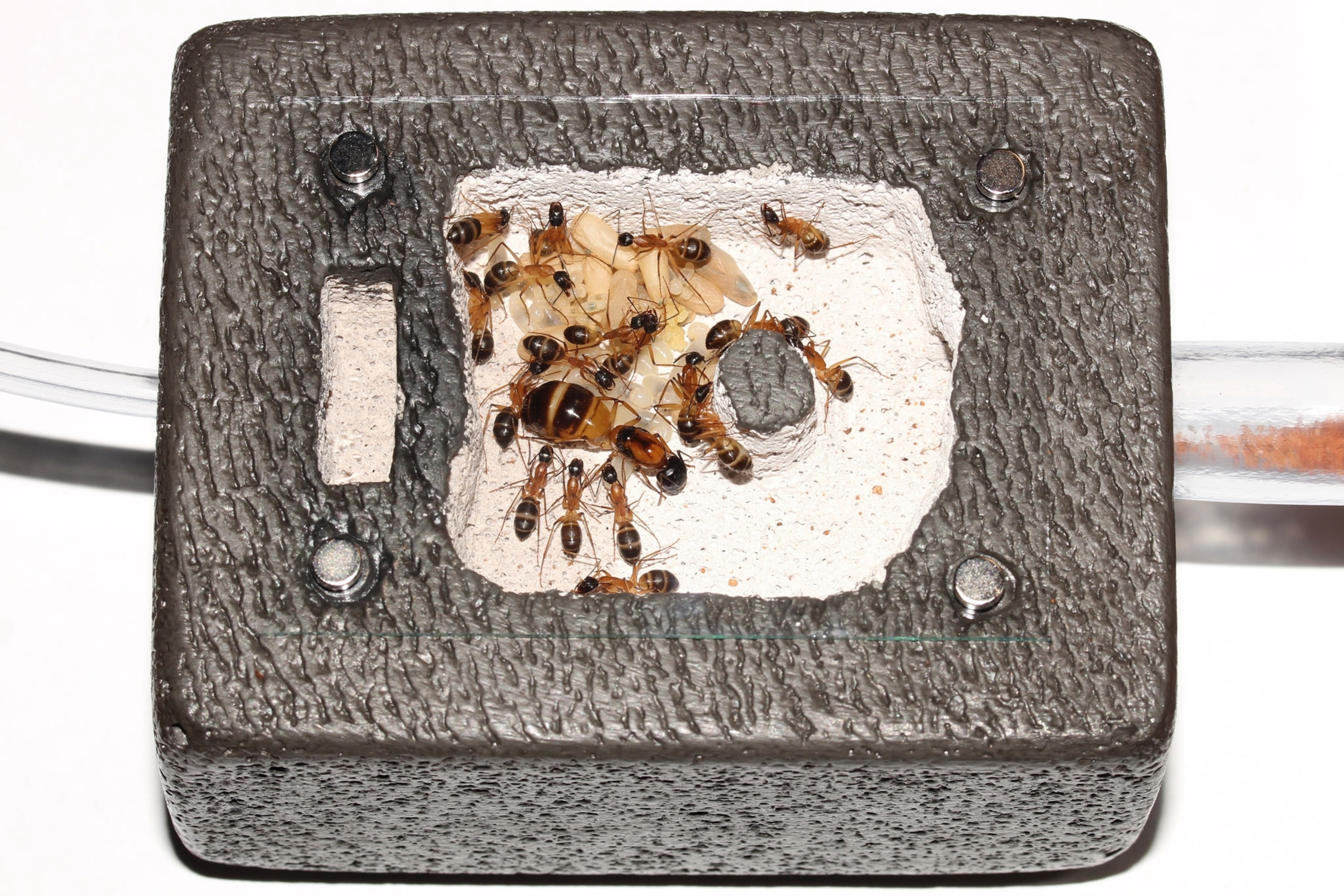
The majority of antkeepers are in high school or younger, hobbyists say; they’re concentrated in the United States, the European Union, Australia, and China. Hobbyists keep a wide variety of ant species—from common pavement ants (Tetramorium immigrans) to red harvester ants that collect seeds (Pogonomyrmex occidentalis) to so-called “honeypot ants,” whose abdomens become so swollen with nectar that they serve as emergency food storage for the rest of the colony.
Unlike diligent hobbyists, myrmecologists—the formal name for ant scientists—often have a hard time keeping any colonies alive. This naturally makes it difficult for them to do their research—but scientist Corrie Moreau conceived a solution. “Instead of beating my head on the pavement trying to solve this—while also trying to do my research—I said, Why not let the experts who know how to care for these organisms do that work for me?” says Moreau, an entomologist at Cornell University and a National Geographic Explorer. “I can learn from them.”
Hobbyists say collaborating with scientists is a way to take their passion to the next level. Antkeeper Chingiz Shigayev, 16, has been keeping ants and documenting species in his home of Baku, Azerbaijan, for several years. He recently joined forces with a scientist, who he’s now helping monitor biodiversity and publish research. “The most exciting thing for me would definitely be the opportunity to help change the fact our local insect fauna is very understudied,” Shigayev says. “To change that is really a dream come true.” Plus, he adds “looking at ants all day is my dream job.”
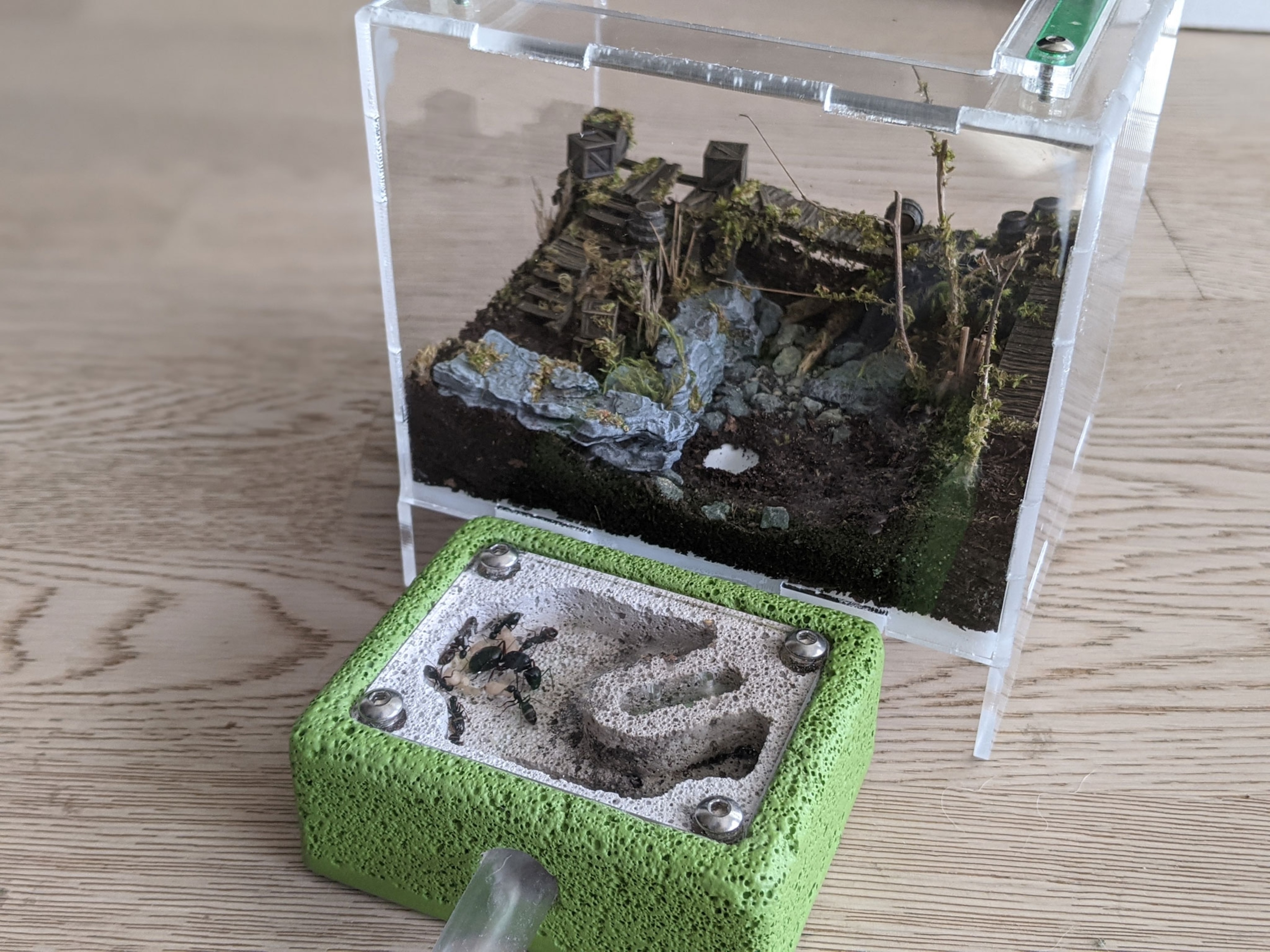
Ants are entertaining in large part because they’re social creatures. You can watch them communicate with each other, save comrades wounded in battle, bury their dead, and even work cooperatively to build structures or farms.
Ant influencer
To bend a metaphor, Nakamura stumbled down the ant hole the same way a lot of people do. He watched a YouTube video by Mikey Bustos, a Filipino-Canadian singer who posts under the username AntsCanada. Antkeepers and myrmecologists around the world cite Bustos’ videos as having helped popularize antkeeping. With four million followers and more than 500 videos posted since 2009, AntsCanada’s YouTube videos are colorful, fast-paced adventure stories that tend to anthropomorphize colonies in a way that helps people better understand—even fall in love with—the six-legged insects.
Bustos’s most popular video, with more than 41 million views since 2016, is “My Fire Ants Are Planning an Escape.” It has a plot more in line with Ocean’s Eleven than Planet Earth. “Oh. My. God. Look at this!” Bustos says at the start. “I have a very serious problem.” On screen, thousands of orangish-brown ants race across a grey decorative rock inside a formicarium. “Now these tropical fire ants can be an ant keeper's dream,” Bustos pauses dramatically, “Or, can be an ant keeper's nightmare.”
Most of the world loathes fire ants because they appear in huge numbers and can deliver a painful sting, but some antkeepers can’t get enough of the fast-growing colonies. Tropical fire ants (Solenopsis geminata) are one of several invasive species of fire ants. The challenge with these, Bustos says, is feeding their voracious appetites and circumventing their attempts to escape. In the video, a tight closeup shot reveals a few dozen fire ants congregating around the edge of the nest’s cover. “When I find them hanging out around the top,” Bustos explains, “it's kind of a red flag for me.” The secret to keeping them happy is to give them more space and double their feeding portions. “When these girls want to escape,” he says in the video, “I just feed them more cockroaches.” The camera zooms in and cinematic music plays as a swarm of ants devours a cockroach.
By providing practical advice and drawing on a plethora of cool ant facts—like how leafcutter ants began farming millions of years before humans, or how queen ants can live for decades Bustos has amassed a cult following and inspired countless kids and adults to experiment with the hobby.
Antkeepers swarm in
Until recently, most scientists had not paid much attention to the antkeeping community. But lately they’ve become more aware of the hobbyists, more trusting of the quality of their research and more comfortable working with them. “The hobbyists are noticing the nuances; they have tricks and tips up their sleeves that I'm completely unaware of,” Moreau says. She has been working for more than a decade with turtle ants (Cephalotes), a tree-dwelling species with big, flattened heads and armored bodies. But she says she and her colleagues have always struggled to maintain turtle ant colonies in the lab.

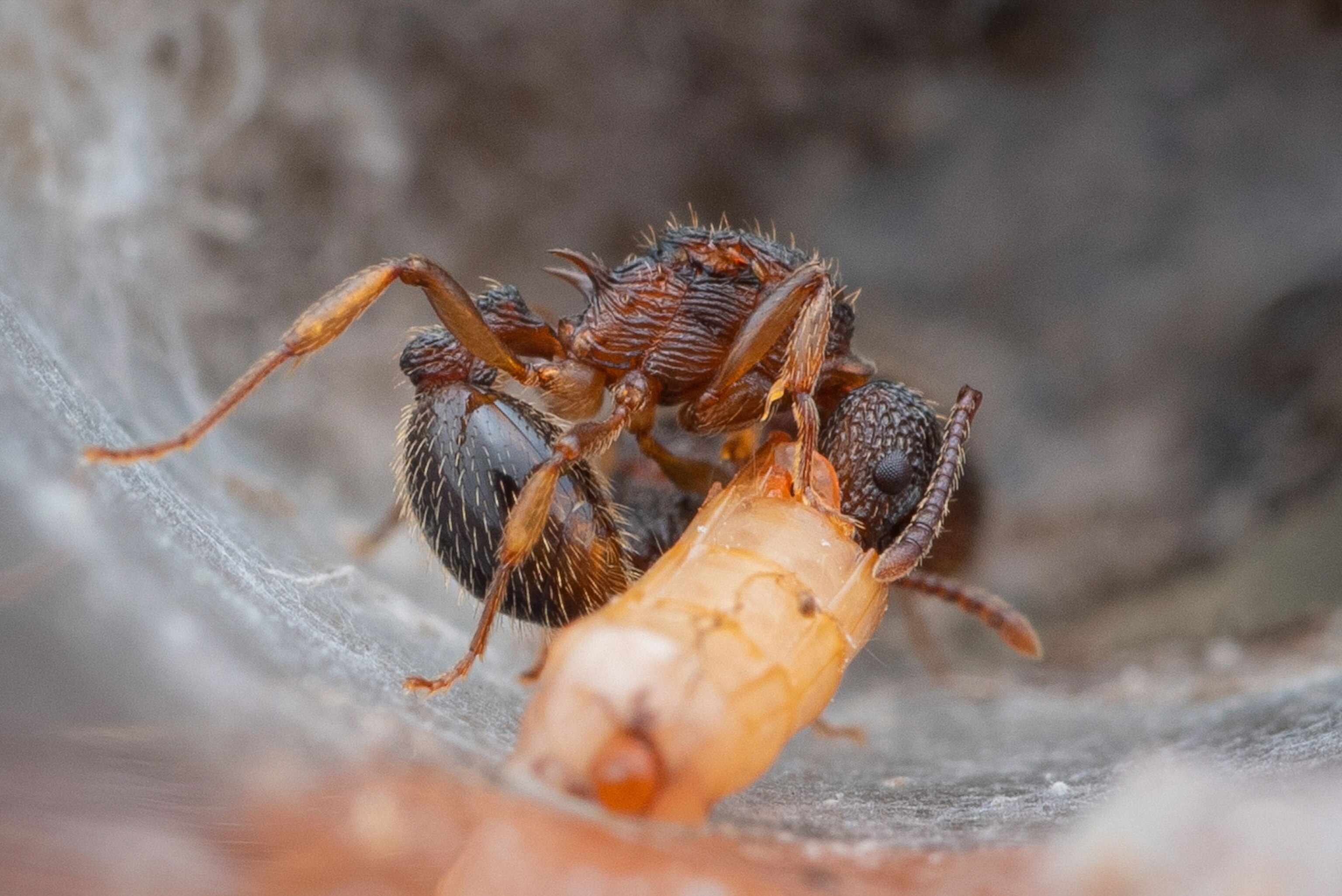
Over time their queens lay fewer healthy eggs, and the colony’s population starts to dwindle. It might seem strange that the people who study ants for a living are not always successful at nurturing ants in their labs, but Moreau sees the logic. A scientist must focus on experiments, not on figuring out what their ants’ favorite foods are—yet scientists can't do research on ants if they can't keep them healthy in the lab. “I reached out to the antkeeper community this past year to help me figure out what I have been doing wrong,” Moreau says.
When Nakamura heard that Moreau was seeking advice about her colonies of Florida turtle ants, he spread the word to antkeepers on the messaging platform Discord. Soon hobbyists from the very region in Florida where these ants live were chiming in with ideas. They suggested she rethink their current diet of distilled water and sucrose and rotate in different types of proteins and sugars. One antkeeper also recommended filtering the lights in the part of the nest where the queen lays her eggs because it likely was brighter than she preferred.
“At first, I was like, the ants don't give a crap,” Moreau says. “And then I was like, wait, the hobbyists are the ones who are successfully rearing up these colonies of thousands of ants, and I'm failing at it. So maybe I should shut up and listen to them, you know?”
She did listen, and the tips made a difference. “Every suggestion we have received from antkeepers has turned out to increase the health of our colonies,” Moreau says. “They are the real experts on how to rear ants.”
Cooperating—for science
The idea of scientists collaborating with hobbyists is starting to catch on.
Andrew Burchill, a myrmecologist and Ph.D. candidate studying animal behavior, turned to antkeepers to help him confirm a rumor he’d heard about spider ants (Leptomyrmex) in Australia. There had been reports of these spider ants hanging upside-down with larvae clutched between their jaws, but nothing had been published in academic literature on it. He wanted to find out whether it really happened and, if so, why.
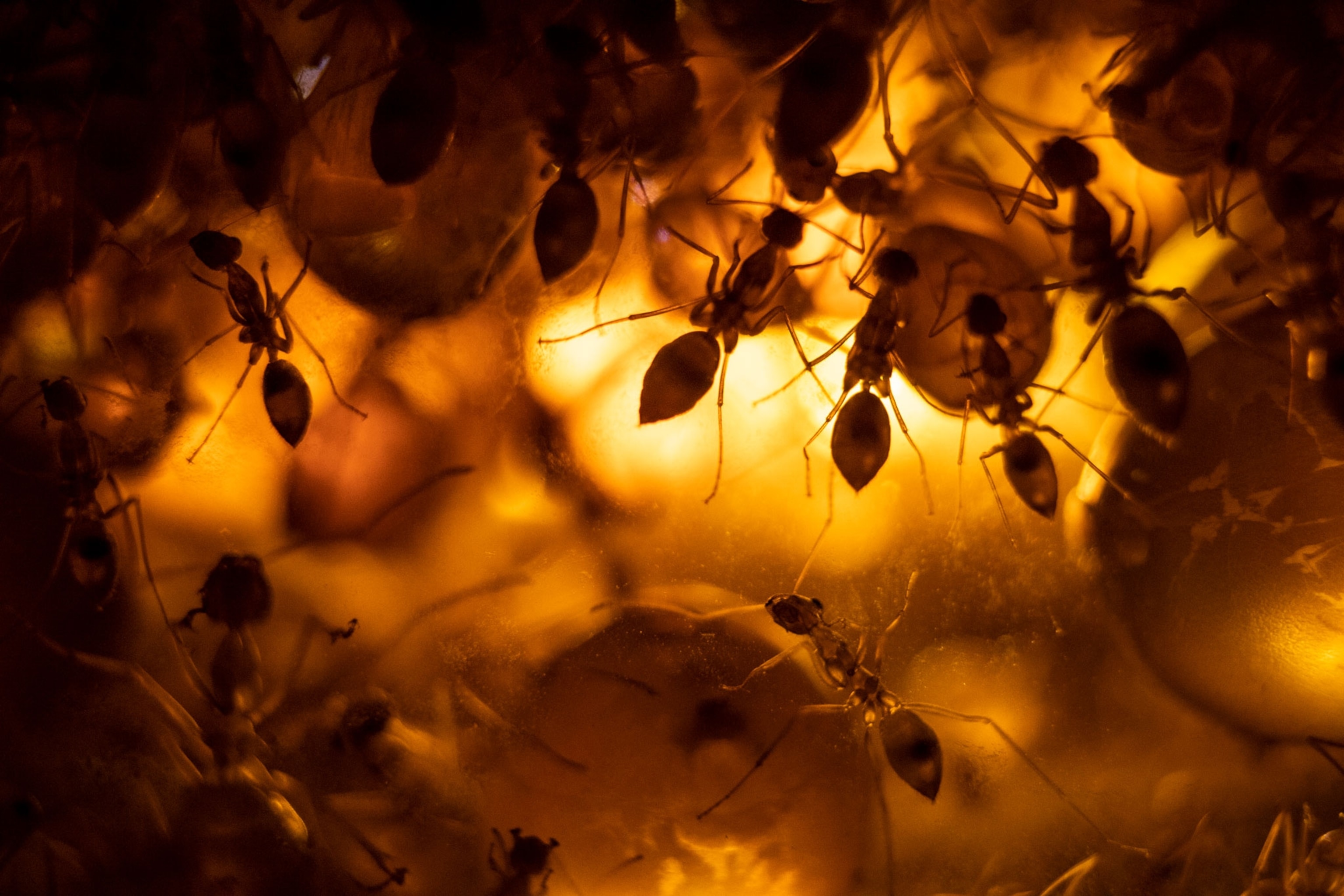
Since spider ants are difficult to collect and keep in captivity, Burchill went online to find ant hobbyists who might have healthy colonies he could observe in person. A few weeks later, he was staring into the chambers of an ant nest in the Melbourne home of Jordan Dean and Nick Atkins, hobbyists and owners of a store that sells antkeeping supplies. “It was incredible. The ants look like a bunch of bats all clustered on the ceiling,” Burchill says. “Then if you look closer, they're all holding these pale larvae in between their jaws—just very vampire-like with these babies off the ground.”
Burchill says he never would have seen that kind of behavior without the hobbyists who devote their time to designing nests that mimic the ants’ natural habitats so closely. Burchill published his observations and hypothesis—that the ants are using the three-dimensional space to help regulate the temperature and humidity for the developing larvae—in the journal Ecology in December 2020, along with photos of the Melbourne nest.
As collaborations broaden, both sides benefit. In Spain, software engineer Rubén Argüeso Vázquez is helping hobbyists and researchers track ants’ annual mating flights with a website he designed, antflights.com. The U.S. Department of Agriculture relies on tips from antkeepers to help track invasive species that might threaten crops. And Nakamura is developing a site to bridge the antkeeping community and scientific community. Called Ant Sci Hub, the site will catalog information gathered by hobbyists and make it more accessible to scientists. “Anyone can contribute to science,” Nakamura says. “You don't need to get proper schooling to do that.”
For this article, National Geographic asked the antkeeping community to submit personal photographs of their colonies. The community can be found on many social media platforms, including Discord and Reddit. Visit AntSciHub.com to learn more.
Lauren Silverman is a writer and the senior producer of the podcast How to Save a Planet.


